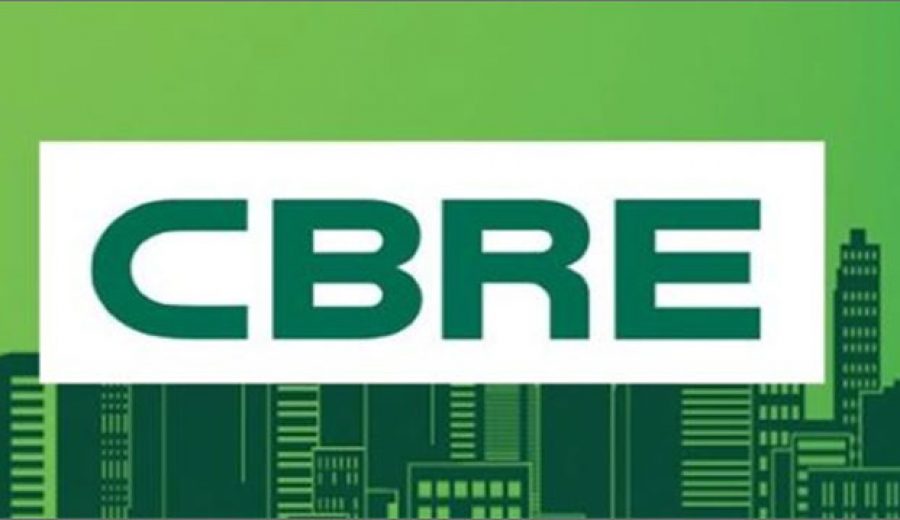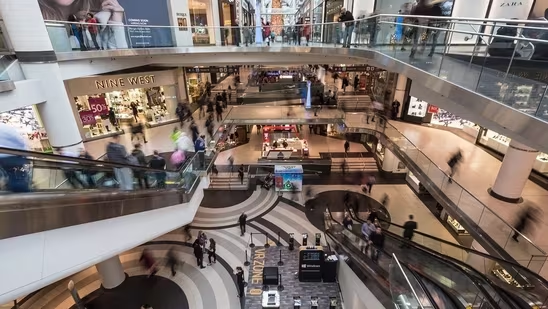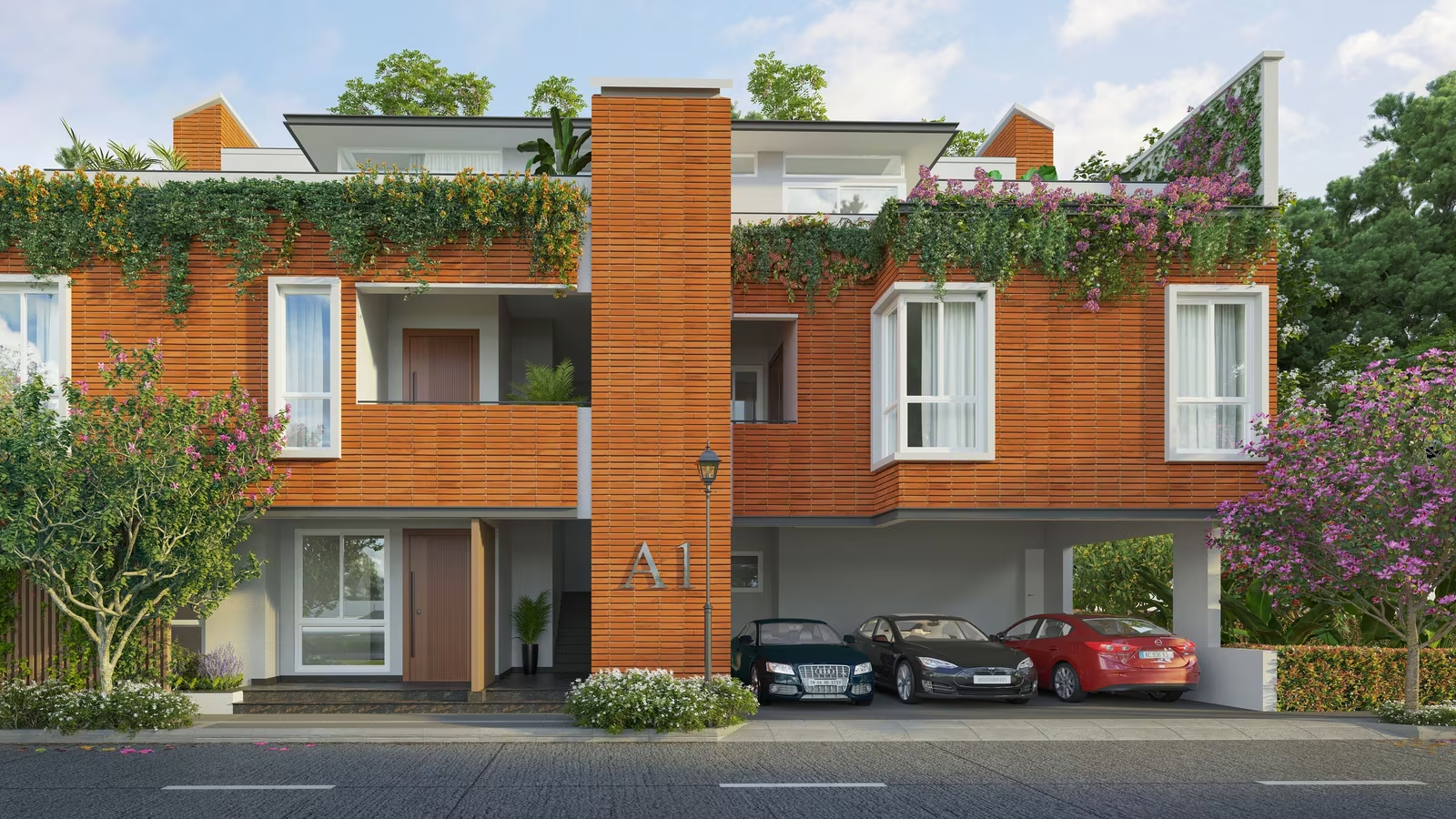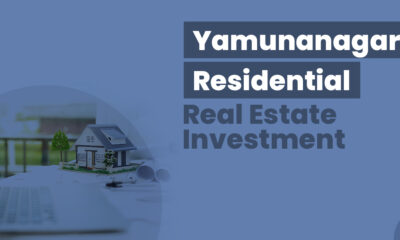Report
Residential sector poised for huge growth, sales rebound 40% Y-o-Y at end of Q1 2022: CBRE


April 29, 2022 – CBRE South Asia Pvt. Ltd., today announced the findings of its ‘India Market Monitor – Q1 2022’. The report highlights the growth, trends, and dynamics across various segments of the real estate sector in India.
According to the report, housing sales jumped nearly 13% Q-o-Q to more than 70,000 units in Q1 2022 and sales rebounded significantly by approximately 40% Y-o-Y. The affordable/budget segment’s share in sales remained stable at 27% in Q1 2022 vis-à-vis Q4 2021. While sales in the high-end category jumped to 23% in Q1 2022 as against 16% in Q4 2022, those in the mid-end segment dropped to 41% in this quarter. The premium and luxury housing segments also witnessed a slight uptick in sales on a Q-o-Q basis.
New unit launches jumped by nearly 30% Y-o-Y to cross the 60,000-unit mark in Q1 2022. With shares of 43% and 30%, mid-end and high-end categories dominated new launches in the country.


“The residential sector is poised for a strong 2022 as both sales and new launches are set for a robust performance after exhibiting resilience last year. Continued policy push by the government (especially to the affordable and mid-end segments), improved vaccination coverage, revival in economic activity coupled with attractive mortgage rates are likely to aid a strong performance by the residential sector,” said Anshuman Magazine, Chairman & CEO – India, South-East Asia, Middle East & Africa, CBRE.
“While we believe that mid-end and affordable categories would continue to drive sales, premium and luxury categories have also witnessed renewed investor interest, fueled by the anticipated appreciation in capital values and increased activity by HNIs and NRIs,” said Gaurav Kumar and Nikhil Bhatia, Managing Directors for Capital Markets and Residential Business, CBRE India.
The report also highlighted that cities in the western part of the country continued to drive sales as well as unit launches. Pune led housing sales in Q1 2022 with a 27% share, followed by Delhi-NCR (21%), Mumbai (20%) and Bangalore (14%). In terms of unit launches, Pune dominated among cities with a 29% share, followed by Mumbai (22%) and Hyderabad (20%).
Other observations
Residential Market Outlook:
- Uptick in new launches expected, especially in Pune, Mumbai, Hyderabad, Delhi-NCR and Bangalore.
- Rise in capital values likely; asset pricing trends would remain divergent with an uptick expected on account of growth in sales and rising input and labor costs.
- Mid-end and affordable categories to drive sales; however, premium and luxury categories are expected to witness renewed investor interest.
- Growing popularity of hybrid work and sporadic homeschooling driving the need for larger unit sizes; growing focus on plotted developments as they offer flexibility on configuration and ancillary amenities
- As end-use takes precedence over speculative investment and buyers become more informed, developer reputation, execution capabilities and financial position would play a bigger role in home purchase decisions.
Office: Positive leasing momentum poised to gain further strength.
- Supply addition in Q1 2022 touched nearly 9.4 million sq. ft., down by about 11% Y-o-Y and 41% Q-o-Q; leasing activity recorded at 11.4 million sq. ft., up by 97% Y-o-Y but down by 25% Q-o-Q.
- Small- to medium-sized deals (up to 50,000 sq. ft.) dominated space take-up with a share of almost 84% in Q1 2022
- Bangalore, followed by Hyderabad and Chennai, dominated supply, with a combined share of 70%
- Technology firms drove the overall leasing activity with a 34% share, followed by BFSI (17%) and flexible space operators (13%)
Outlook:
- Leasing activity is expected to strengthen further in the coming quarters on account of a combination of pent-up demand and expansion / consolidation-led leasing as occupiers start to realign their post-pandemic business strategies.
- Continued growth in supply expected, with focus on large-sized and high-quality buildings by developers to differentiate their assets and attract occupiers.
- Large institutional players to continue with greenfield investments via JVs / partnerships / platforms or brownfield investments via REITs, which in turn would boost upcoming supply in the coming years.
- Occupiers expected to recalibrate workplace designs; demand for sophisticated and tech-enhanced real estate offerings to grow as occupiers focus on providing a safe and healthy workplace to employees while meeting their need for flexibility.
Industrial & Logistics: Tier-I cities lead sector’s upward growth trajectory.
- I&L leasing activity witnessed about 19% Y-o-Y growth to reach 6.5 million sq. ft. in Q1 2022.
- With a share of ~ 71%, medium- to large-sized deals (more than 50,000 sq. ft.) dominated the leasing activity
- Delhi-NCR led absorption with a 27% share, followed by Mumbai (21%) and Kolkata (16%).
- From a sectoral perspective, 3PL players and retail firms were the key drivers of demand.
- 5.8 million sq. ft. of supply addition witnessed in Q1 2022, up by ~95% Y-o-Y
Outlook:
- Space take-up likely to touch about 35-37 million sq. ft., led by the continued expansion of e-commerce and 3PL players against the backdrop of macro-economic recovery and rise in online retail penetration.
- Warehousing facilities with features such as a high ceiling to accommodate automated stacking systems, sufficient loading / unloading zones and power backup provisions likely to gain traction in 2022.
- Implementation of emerging technologies such as AI, blockchain, Big Data, IoT etc., across the supply chain likely to enhance delivery throughput and improve operational / space efficiencies.
- Continued supply chain disruptions would lead occupiers to review I&L portfolios with the aim of enhancing supply chain resilience. Occupiers to consider deploying ‘just-in-case’ inventory strategies alongside ‘just-in-time’ ones.
- Capital flows to continue rising, with domestic investors targeting greenfield assets. Increased preference for brownfield / platform acquisitions displayed by global investors is expected.
Retail: Traditional demand drivers shore up sentiments as sector remains in recovery mode
- Retail leasing activity touched 0.5 million sq. ft. in Q1 2022 across Grade A malls and high streets, registering a Y-o-Y increase of nearly 40%
- Hyderabad and Bangalore led investment-grade mall supply addition in Q1 2022
Outlook:
- Prime malls and high streets likely to remain the most sought-after locations. Churn across these key destinations may allow some retailers an opportunity to locate / scale up across these locations and malls.
- While demand from categories such as QSRs, supermarkets, electronics and consumer durables is expected to sustain, other categories such as fashion & apparel and beauty are likely to pick up pace owing to pent-up demand.
- Retailers increasingly expanding their offerings by partnering with direct-to-consumer companies – often via branded kiosks or within department stores – to add foot traffic for legacy stores and establish a physical presence for emerging retail brands.
- Consolidation expected to emerge as a key outcome of changing consumer priorities and growing M&A and PE activity. At the same time, social commerce such as F&B, grocery, apparel, beauty, consumer electronics, home décor, etc. would in a way fragment and add layers to the retail segment.
RE Investments: Sector on growth path as investors step on gas pedal
- At nearly USD 1.4 billion, capital flows up by 24% Q-o-Q in Q1 2022
- With a 38% share, land / development sites dominated investments; followed by office (35%) and retail (19%) sectors
- Mumbai, Delhi-NCR and Chennai cumulatively accounted for about 64% of the total investment quantum in Q1 2022
- Institutional investors led investment activity with a share of nearly 50%, followed by developers (38%)
- While institutional investors have primarily infused equity in brownfield assets, developers remained focused on greenfield investments
- Foreign investors accounted for 59% of the total investment volume in Q1 2022. Key sources of capital were the UAE (36%), Canada (11%) and the US (7%)
- Nearly half of the total capital flows during Q1 2022 were deployed for pure investment / acquisition purposes, while 45% was invested in development / greenfield projects
Outlook:
- An increase of 5-10% Y-o-Y is expected over the 2021 investment value; greenfield assets likely to experience strong investment uptick.
- Developers to continue investing in development opportunities to expand portfolios; core and core-plus assets expected to garner higher interest from institutional investors, given their lower risks.
- Banks likely to make a strong comeback in 2022 to provide lending to the CRE sector, with a focus on construction finance and LRD routes. Alternate Investment Funds to remain a major source of lending to CRE sector as NBFCs also plan to set up such funds to cater to funding requirements.
- Investments in alternate assets, particularly data centres, could gain further traction amidst rising digitisation and strong policy push towards a digital economy; sustainability and ESG practices to emerge as stronger themes in investment strategies.
- Investments into REITs expected to increase owing to portfolio expansion and launch of new REITs across office, warehousing, and retail assets.
-



 News4 weeks ago
News4 weeks agoKW Delhi 6 Mall Onboards New Brands
-



 News4 weeks ago
News4 weeks agoManasum Senior Living Launches IKIGAI GOA, A Senior Living Community in North Goa, in collaboration with Prescon Homes
-



 News4 weeks ago
News4 weeks agoCommercial Realty Gets Tech Savvy: Fast Construction, Enhanced Convenience
-



 News4 weeks ago
News4 weeks agoBridging India Divide: Top 5 Tier- 2 Cities to Focus On
-



 News3 weeks ago
News3 weeks agoGodrej Properties Sells Rs 3k cr+ Homes of Godrej Zenith, Gurugram, within 3 days
-



 News4 weeks ago
News4 weeks agoMultipoint Connection – A Definite Boon
-





 News3 weeks ago
News3 weeks agoRBI’s Status Quo on Key Policy Rates to Help Maintain the Real Estate Growth Momentum, Say Industry Stalwarts
-



 News1 week ago
News1 week agoOlive Announces Dhruv Kalro as Co-Founder

























